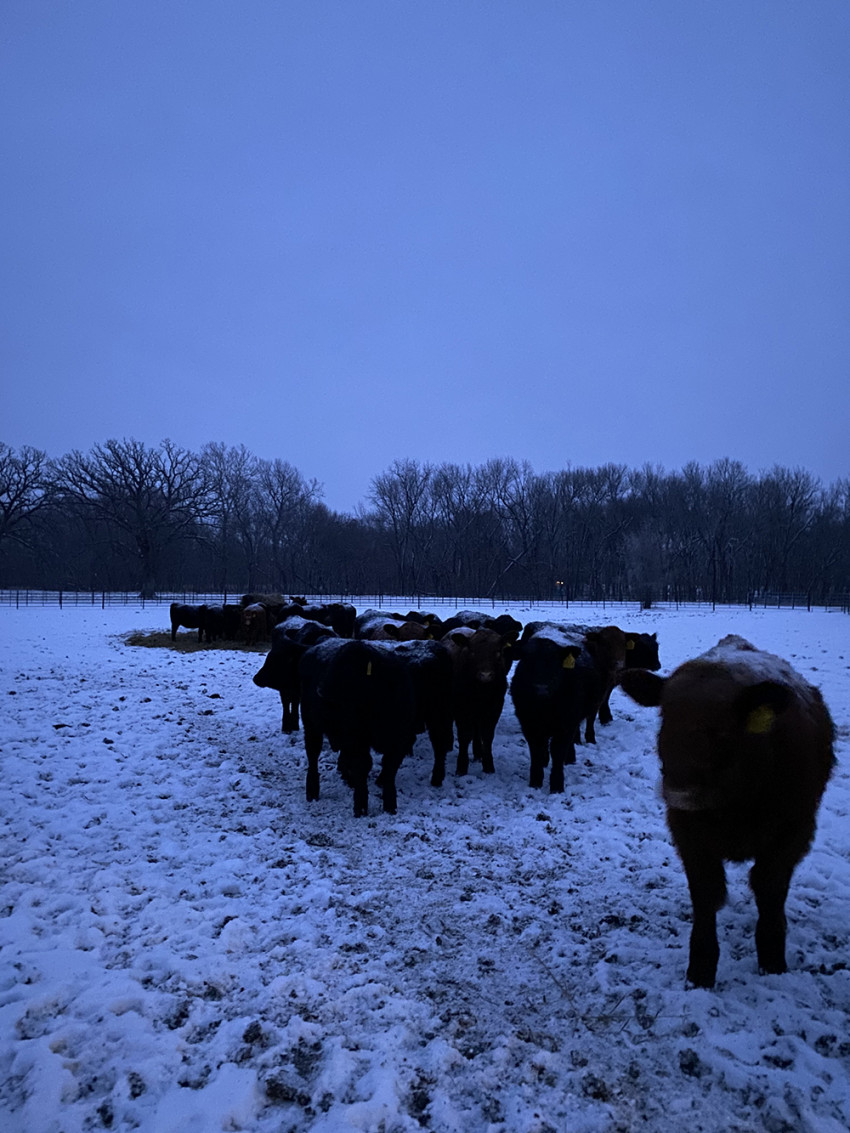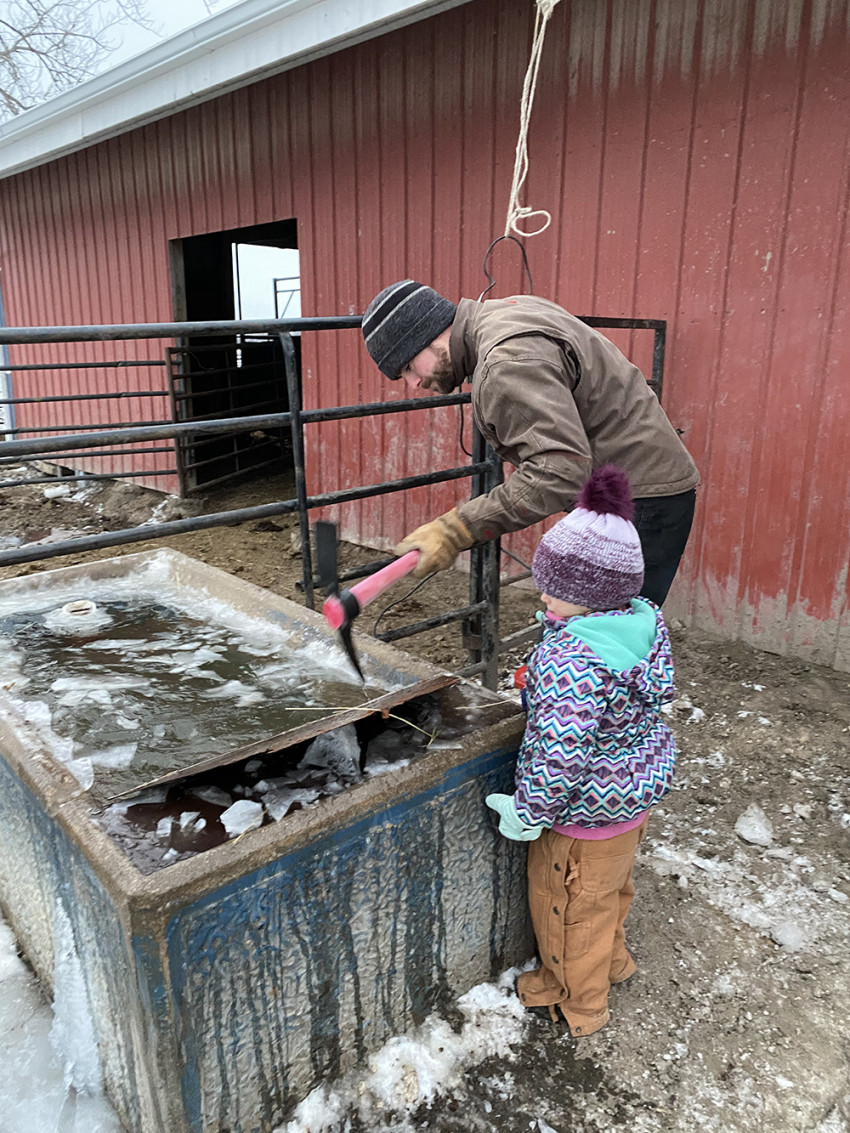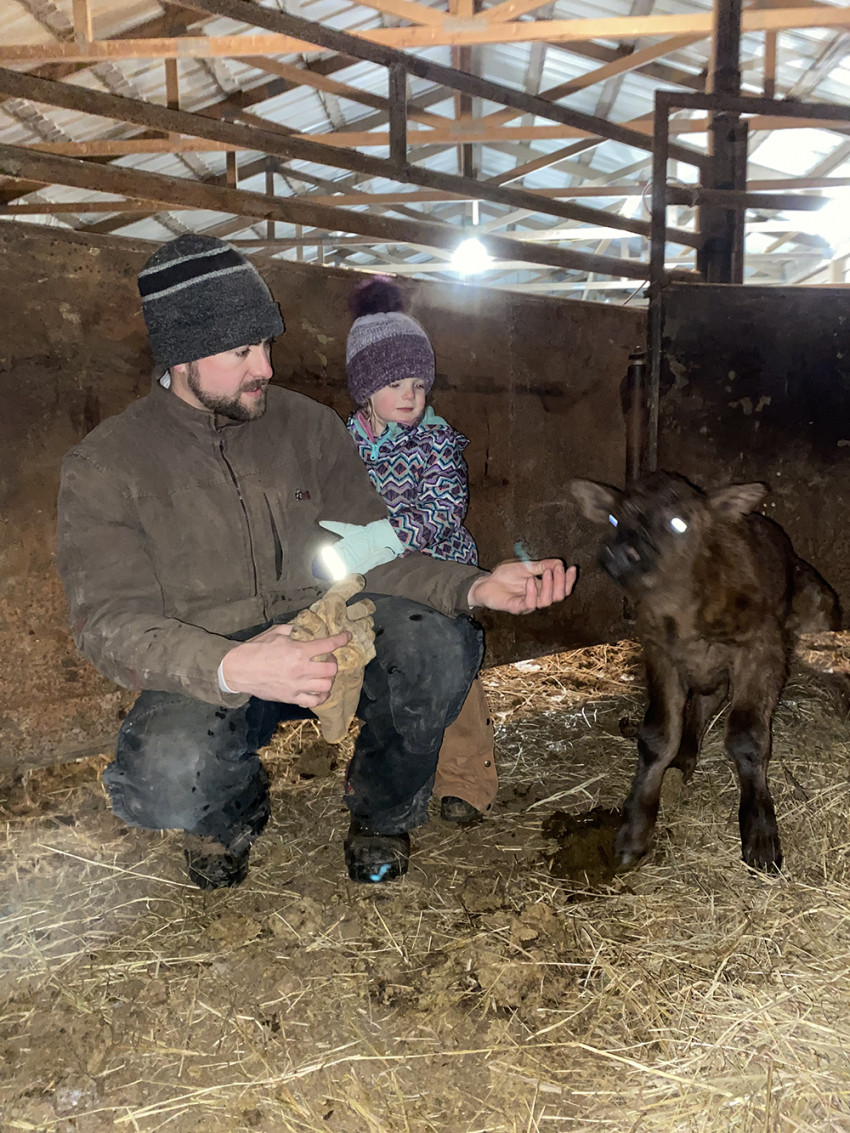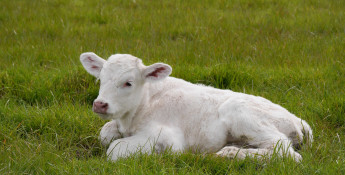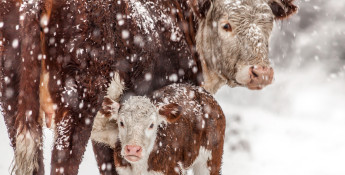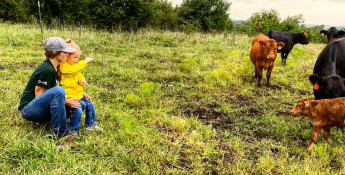By Brandi Buzzard on February 18, 2021
When The Lights Go Out in the Country
How ranchers care for cattle in the bitter cold
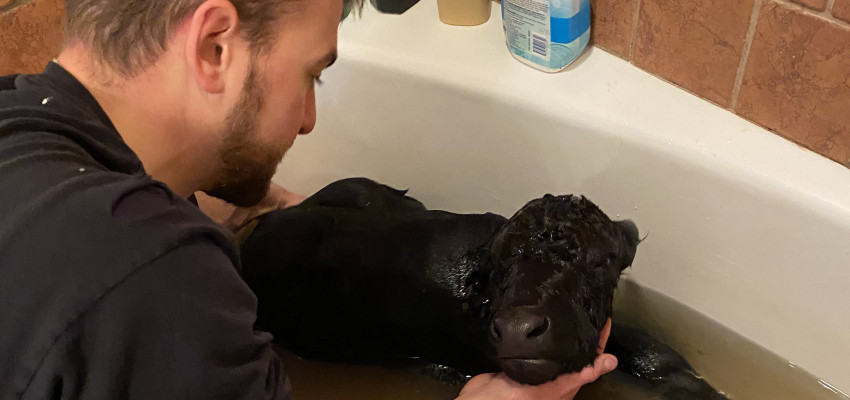
As I write this, farmers and ranchers across the nation are dealing with cold, brutal weather; the likes of which hasn’t been seen for decades in many places. Personally, our little corner of Kansas is experiencing minus-25-degree wind chills. This is the first time in my life I can remember this type of cold, and I hope it’s the last.
How does a cattle rancher keep her livestock “warm” in this weather? That might be a loaded question because, truly, we can’t keep them as warm as we want. But they do have their own metabolic features keeping them somewhat comfortable to get through this.
For example, when sub-zero temperatures roll in or there is a blizzard, we make sure to give the cows lots of extra hay and feed so they have plenty to eat. Eating keeps their metabolism going, which generates body heat. Additionally, we often place additional hay bales in the pasture, which serves as a windbreak or as bedding once the cows pull it apart. Either way, it’s helpful in keeping them as comfortable as possible.
We know they have some level of comfort when we can see snow on their backs – their thick coats of hair serve as insulation against the snow and wind.
This insulation prevents snow from melting and their hide and/or hair getting wet – if the snow doesn’t melt on their back, they are much better off. Wet and windblown is not an enjoyable situation for any livestock animal.
As one can imagine, this type of extreme cold is hard, not only on our homes and furnaces, but also on our livestock, equipment and people. A seemingly small task such as filling a water tank automatically takes much more time once chopping ice, thawing the automatic dripper, fixing the water heater, and in many cases, hauling buckets to fill the tank are factored into the equation. For cattle in pastures with ponds and lakes, chopping large openings in the ice is the rancher’s Beach Body routine. Water is a necessity year-round, not just in summer. In the winter, when animals are receiving extra feed to boost their body heat and metabolism, the likelihood of a digestive issue developing is increased if ample water isn’t available.
One of the most frightening events during this extreme weather is the arrival of new calves. You may remember from my previous posts, our herd calves in the fall, meaning we only have new babies from roughly September – November. Well, I’m really kicking myself for gloating about that, because in December we purchased some cows due to calve in February… during the coldest weather in decades. For us, the concern and stress are amplified because not only are we on watch for calving difficulty from the mama cow, we are also fighting the clock to make sure she gets that calf up, dries it off and gets some milk in its belly right away. It’s not unheard of for calves to freeze to the ground and perish in weather like this. To prevent those tragedies, we are checking the herd every few hours and making sure cows that appear near-labor are in a pen with bedding and a windbreak so the calf has a chance to get dried off. On the chance one isn’t getting up or is just too cold, we’ll dry and rub it with towels or put it in a tub of hot water to get its body temperature back up to normal. On the occasion we have a “bathtub baby,” we generally give that calf a bottle so its belly is full of warm milk before we return it to its mama. We have had calves in the bathtub, in the truck and in the mudroom wrapped in a horse blanket to get them warmed up. Farmers and ranchers will use all our tricks to make sure we don’t lose a calf. I can’t adequately explain the heartache when we lose one to this weather.
The last piece of the “polar attack” (that’s my name for Mother Nature’s cruelty) equation is equipment. To put out hay, feed cattle and manage the ranch, we rely on equipment. Feed trucks, skid loaders, hay bale attachments for truck beds and heavy-duty tractors are all tools we use daily to make sure the cattle are cared for and fed. But, understandably, those engines can be very slow to turn over in this arctic weather, so ranchers sometimes have to improvise by throwing cattle cubes off the back of the truck with a shovel or calling a neighbor to put feed out for us.
One of the hallmarks of the farming and ranching community is that we are all in this together – no one struggles alone.
It’s not uncommon for one of us to deliver hay to our pasture, then stop by the neighbor’s place before heading back home to take on the next task. Like so many other professions such as doctors, firefighters, linemen, etc., we work hard to achieve a common goal and we are better together.

